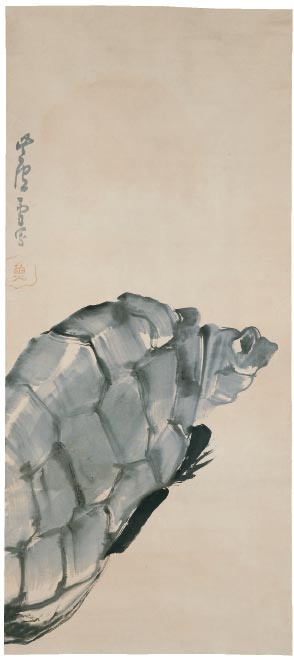
The creative energy of the mid-Edo period, in
the eighteenth century, which the scholar of Japanese literature
Fujioka Sakutarō (1870−1910) described as a “reform of old customs,”
led to the rise of painters from the newly emerging merchant class.
Like his predecessors Yosa Buson (1716−1783), Itō Jakuchū
(1716−1800), and Ike no Taiga (1723−1776), Nagasawa Rosetsu
(1754−1799), who was born approximately thirty years later, left us
with many unique paintings.

Rosetsu started as a pupil of Maruyama Ōkyo (1733−1795), who gained fame with his “realistic sketches of nature” and, in time, distinguished himself. From the end of 1785 to the beginning of the following year, Rosetsu visited the Nanki region (southern Wakayama Prefecture) and produced many paintings on sliding screens. Tiger (Muryō-ji Temple, Kushimoto Ōkyo Rosetsu Hall), the masterpiece of these screens, represents his uninhibited inspiration based on the “subjectivity of self.” This exhibition explores the fascination with Rosetsu through an overview of his works from the beginning of his career to his later years, including newly discovered paintings.
Rosetsu started as a pupil of Maruyama Ōkyo (1733−1795), who gained fame with his “realistic sketches of nature” and, in time, distinguished himself. From the end of 1785 to the beginning of the following year, Rosetsu visited the Nanki region (southern Wakayama Prefecture) and produced many paintings on sliding screens. Tiger (Muryō-ji Temple, Kushimoto Ōkyo Rosetsu Hall), the masterpiece of these screens, represents his uninhibited inspiration based on the “subjectivity of self.” This exhibition explores the fascination with Rosetsu through an overview of his works from the beginning of his career to his later years, including newly discovered paintings.
 |
Great Tortoise and Rising Sun Light color and ink on paper Edo period, 18th century Miho Museum |